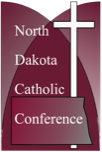
To: House Human Services Committee
From: Christopher Dodson, Executive Director
Subject: Senate Bill 2150
Date: March 14, 2023
The North Dakota Catholic Conference supports Senate Bill 2150 because it better states the Legislative Assembly’s previously enacted abortion laws for this post-Roe world.
Desiring to protect unborn human life from abortion, this legislative body has, over many sessions, enacted several laws prohibiting abortions or particular types of abortions. Some of those laws were constitutional under Roe and Casey, some were not. After the Dobbs decision, all of them are presumably constitutional under the U.S. Constitution.
Not all of them, however, are still needed. Some are absorbed or made superfluous by other statutes. In addition, some of the definitions and provisions are facially inconsistent. The purpose of SB 2150 is to address these problems. It is the result of months of work involving various experts and stakeholders.
Before explaining the bill’s details, it helps to review the previously enacted laws, how they overlap, and why some control over others.
This first table shows all the laws enacted that prohibit abortions in some way, the laws’ exceptions, and scopes according to weeks of gestation.
Without going into the details of each law, we can see that there is some overlap so that some laws are made superfluous by others.
After removing those laws, we have left what is commonly called the “trigger law” which passed in 2007, and what is commonly called the “heartbeat ban,” which passed in 2013. Those two laws look like this.
According to principles established by the North Dakota Supreme Court, the legislature is presumed to have known about earlier enacted laws and to have intended to replace them where applicable. In other words, the latter enacted controls. In this case, the heartbeat ban controls where applicable.
Applying this principle, we have this.
In short, all abortions are prohibited except for reasons of rape or incest during the first six weeks and for the life of the mother or a medical emergency to prevent substantial physical impairment of a major bodily function throughout pregnancy.
This is what the legislature has already passed and intended to go into effect.
The ultimate effect of these laws when combined and the judicial principles of construction are applied is not easily apparent. Almost immediately after the Dobbs decision, it became apparent that legislators, healthcare providers, activists on both sides, and journalists were confused about what law applied and when. Several legislators and representatives from pro-life organizations met and decided that it would be in everyone’s interest to work off one cleaned-up law. People might want to debate what should be the law, but first, let’s better state what is the law.
The result is SB 2150, the purpose of which is to better express and implement what the Legislative Assembly has already enacted. It does this by:
- Stating in one statute prohibitions previously enacted in separate statutes;
- Removing obsolete language and language made moot by the scope of other broader statutes;
- Making the language, definitions, and exceptions consistent;
- Clarifying ambiguous language; and
- Except when necessary to accomplish the above, not making any substantive changes to what the Legislative Assembly has already enacted.
Some other points about the bill are worth noting before we review the bill’s provisions:
- We examined parts of the Century Code other than the trigger law and the Abortion Control Act that might be impacted and addressed them when appropriate.
- The bill preserves the typical structure of the Century Code by placing direct criminal violations in the Criminal Code and keeping in the Abortion Control Act the requirements for abortions that are legal.
- We do not believe that SB 2150 impacts, one way or the other, the current case before the North Dakota Supreme Court because the changes made in SB 2150 do not impact the issue presented in that case.
- The original version of SB 2150 concerned only amending the state’s abortion prohibitions. Subsequently, the Attorney General’s office suggested amendments to other abortion-related laws to make them consistent with SB 2150’s changes and to clarify other parts of the Abortion Control Act. Here again, none of these changes substantively alter what the legislature has already enacted. Those suggestions were adopted by the Senate.
A walk-through of the bill is included at the end of this testimony. If the committee prefers a summary, SB 2150 can be viewed in three parts: the criminal code section, the Abortion Control Act, and the repealed sections.
The Criminal Code
Section 1 of the bill amends what was known as the “trigger law. SB 2150 makes several important changes to this law. They are:
- The definition of “abortion” is based on the definition used in the Abortion Control Act. That definition was more recently passed, is clearer, and expressly excludes treating ectopic pregnancies.
- A definition of “medical emergency” is added and made an exception to the offense. It is a cleaned-up version of the definition used in the Abortion Control Act. The definition also includes a change requested by the North Dakota Hospital Association and the North Dakota Medical Association.
- The exceptions are changed from affirmative defenses to direct exceptions. The “trigger ban” used affirmative defenses, in which a defendant would have to assert and then prove that the requirements for the exceptions existed. However, the “heartbeat ban,” which under the principles of construction applies to all abortions after six weeks gestation, uses direct exception language. Because the most recent legislation used exceptions rather than affirmative defenses, and because it makes no sense to use affirmative defenses for abortions occurring during the first six weeks of gestation, but not after, SB 2150 removes the affirmative defenses to direct exceptions for all abortions.
- The exception for abortions in the case of rape or incest is limited to abortions done in the first six weeks of gestation. The heartbeat ban enacted in 2013 does not contain exceptions for rape or incest. Since this is the controlling law and because the purpose of the heartbeat ban was to prohibit abortions after six weeks gestation, the exception exists only for those weeks. This is the existing law, with or without SB 2150.
Abortion Control Act and Physician Disciplinary Actions
The rest of the bill primarily addresses changes to the requirements necessary for those abortions that are still permitted. As it always has been, most of these requirements are in the Abortion Control Act. These provisions primarily affect the Department of Health and Human Services, the courts, and the informed consent requirements. Major changes in this section include:
- At the suggestion of the Attorney General’s office, the preamble to the chapter was revised to indicate that the chapter concerns abortions not otherwise prohibited by law.
- Throughout this section, definitions, phrases, and requirements related to now superfluous laws, such as the ban on abortions for genetic abnormalities, the dilation and evacuation ban, and the twenty-week ban.
- The definitions are made consistent.
- It requires that the materials produced by the Department of Health and Human Services that, in addition to being made available to the public, must be provided to a woman seeking an abortion by the physician or the physician’s assistant twenty-four hours before the abortion now include information about what is prohibited and what is allowed.
- It adds to the abortion data report form that must be submitted to the Department of Health and Human Services for every abortion an indication of whether the abortion was to prevent the death of the mother, because of rape or incest, or necessary due to a medical emergency.
- The requirement that a wife receives consent from her husband before obtaining an abortion is removed. This language was found unconstitutional many years ago and at this time it is not known whether it would be allowed under the Dobbs framework. Considering that the only abortions that would now be allowed would be for saving the life of the mother, in a medical emergency, or because of rape or incest, the language was removed.
- In the case of a judicial bypass for a minor, the judge must now enter a finding that the pregnancy was due to rape or incest. Medical emergencies, including those to prevent the death of the minor, are already excluded from the parental consent provisions.
- It added that the physician must include on the abortion compliance report whether the abortion was to prevent the death of the mother, was because of reasons of rape or incest, or was necessary due to a medical emergency.
- It removes subjecting a physician to disciplinary action for violating the heartbeat ban because the heartbeat ban is now removed from the code. Another section of the existing law subjects a physician to disciplinary action for a conviction for any felony. (See Section 43-17-31(1)(b).)
Repealed Sections
These sections were either made moot by the scope of other sections or are incorporated into the revised Section 12.1-31-12.
These revisions might not be perfect. We might find other sections or statutes that should be revised. There may exist other parts of the Abortion Control Act not concerning the prohibitions that the committee may consider.
Senate Bill 2150, however, provides a better way than the existing statutes of implementing what the legislature has already enacted and it removes unnecessary and confusing language. It is the conference’s hope that if legislators want to change these laws in this session they offer amendments to this bill.
Senate Bill 2150 does not enact new bans on abortions. All the prohibitions in SB 2150 already exist and they would still exist if SB 2150 is not enacted. However, if it does not pass:
- Defendants would have to rely on affirmative defenses for abortions excepted under the law if the abortion occurred within the first six weeks of gestation, but not for abortions occurring after six weeks of gestation;
- Questions could arise as to whether the treatment of ectopic pregnancies or abortions in cases of medical emergencies would be legal during the first six weeks of gestation, but no such questions would arise after six weeks of gestation; and
- Confusion could exist as to which law would be violated when more than one statute encompasses the prohibited abortion.
Ultimately, the question presented by SB 2150 is not about whether a person supports or opposes prohibiting abortion. It is about whether we want a clearer, better statute.
For these reasons, the North Dakota Catholic Conference requests a “Do Pass” recommendation on SB 2150.
What We Do
The North Dakota Catholic Conference acts on behalf of the Roman Catholic bishops of North Dakota to respond to public policy issues of concern to the Catholic Church and to educate Catholics and the general public about Catholic social doctrine.

Contact Us
North Dakota Catholic Conference
103 South Third Street, Suite 10
Bismarck, North Dakota
58501
1-888-419-1237
701-223-2519
Contact Us

